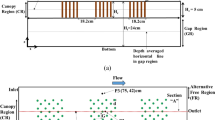Abstract.
Field experiments were conducted to measure sand transport rate using eight vertical sand traps and the speed of wind-blown sand in a natural setting. A Leatherman sand trap with an inlet width of 0.01 m and a height of 1.5 m was selected to measure sand flux in the field. The trap was assessed for its efficiency by comparing its collection of sand particles concurrently with the collection by a fence of 50% porosity and 2 m height, erected near the trap. It was found that such a trap design tends to under-collect material under variable winds by about 40% compared with the fence. The wind direction and speed were measured at five fixed heights: 2, 4, 6, 8 and 10 m and at 5-s intervals. Based on the available records, the wind shear velocity in eight directions was determined for the dates of collection in the sand traps. The sand transport rates were then predicted using four well-known sand transport equations. Setting the actual coefficients of these equations to a unity, the flux for each run was calculated and then compared with the calibrated flux derived from the trap collections. Empirical coefficients of these selected equations were evaluated and found to have higher values than those cited in the literature: CB=3.5, CZ=3.4, CK=4.4 and CL=6.1 for the equations proposed by Bagnold (1941), Zingg (1953), Kawamura (1951) and Lettau and Lettau (1978) respectively.
Résumé.
Des expériences de terrain sur un site naturel ont été réalisées pour mesurer des taux de transport de sable ainsi que la vitesse de ces sables soufflés par le vent. Huit pièges à sable verticaux ont été utilisés. Le piège à sable de Leatherman présentant une ouverture de 0,01 m de largeur et une hauteur de 1,5 m a été sélectionné à cette fin. L'efficacité du piège à sable a été évaluée en comparant la quantité de particules de sable retenue par le piège avec celle retenue par une palissade de 2 m de hauteur et 50% de porosité installée près du piège à sable.
Il a été montré que, avec des vents variables, ce piège à sable ne récupère qu'environ 40% de matériau par comparaison avec ce qui est récupéré par la palissade considérée. La direction du vent et sa vitesse étaient mesurées à cinq hauteurs précises: 2, 4, 6, 8 et 10 m et à des intervalles de 5 s. A partir des enregistrements disponibles, la vitesse de cisaillement du vent a été déterminée dans huit directions aux dates de récupération des matériaux dans les pièges à sable.
Les taux de transport de sable ont alors été prévus, utilisant quatre équations de transport de sable bien connues. Le calcul des flux pour chaque scénario et leur comparaison avec les mesures obtenues grâce aux pièges à sable a permis de caler les coefficients intervenant dans ces équations. Des valeurs plus élevées que celles publiées usuellement ont été trouvées pour ces coefficients empiriques: CB=3,5, CZ=4,4 et CL=6,1 pour les équations proposées par Bagnold (1941), Zingg (1953), Kawamura (1951) et Lettau (1978).
Similar content being viewed by others
Author information
Authors and Affiliations
Additional information
Electronic Publication
Rights and permissions
About this article
Cite this article
Al-Awadhi, J., Al-Sudairawi, M. Preliminary evaluation of the applicability of sand transport formulae for use in Kuwait. Bull Eng Geol Environ 61, 137–144 (2002). https://doi.org/10.1007/s100640100129
Received:
Accepted:
Issue Date:
DOI: https://doi.org/10.1007/s100640100129




